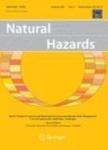版权所有:内蒙古大学图书馆 技术提供:维普资讯• 智图
内蒙古自治区呼和浩特市赛罕区大学西街235号 邮编: 010021

作者机构:Univ Tehran Coll Aburaihan Dept Water Engn Tehran Iran Iranian Natl Inst Oceanog & Atmospher Sci Tehran Iran
出 版 物:《NATURAL HAZARDS》 (Nat. Hazards)
年 卷 期:2025年第121卷第7期
页 面:8211-8239页
核心收录:
学科分类:07[理学] 0708[理学-地球物理学] 0815[工学-水利工程] 0706[理学-大气科学]
主 题:Flood forecasting GFS WRF Hydrological model Numerical weather prediction
摘 要:Precipitation prediction in mountainous regions is one of the most challenging topics in numerical weather prediction (NWP) models. This study aims to compare two types of NWP models: the General Circulation Model-Global Forecast System (GCM-GFS) and the mesoscale Weather Research and Forecasting (WRF). The comparison is based on various early lead-times (1, 3, and 5 days) in precipitation prediction and, consequently, flood forecasting in the northern parts of the Zagros Mountains, Iran. For this purpose, five observational flood events were selected in the region. To optimize the WRF model s configuration, twelve setups were tested by combining microphysical and planetary boundary layer schemes. The Morrison and YSU schemes demonstrated superior performance in precipitation prediction. Comparative analysis of WRF and GFS model outputs revealed WRF s better performance in point analysis using the nearest-neighbors method, while GFS exhibited greater reliability for mean areal precipitation. Subsequently, flood simulation was performed using the HEC-HMS model. Precipitation predicted by the GFS and WRF models was introduced to the HEC-HMS model in three early lead-times for flood forecast in all three domains of 3, 9, and 27 km. The results showed that in both the precipitation forecast and flood hydrographs produced by the HEC-HMS model, in most cases, the forecasting performance decreased with increasing early lead-time. Overall, based on the results of this study, the third domain of the mesoscale WRF model did not demonstrate significant added value over GFS outputs in most events. This underscores the necessity of focusing on reducing uncertainties and applying bias correction to the model outputs before their use in hydrological simulations, particularly in regions with complex topography.